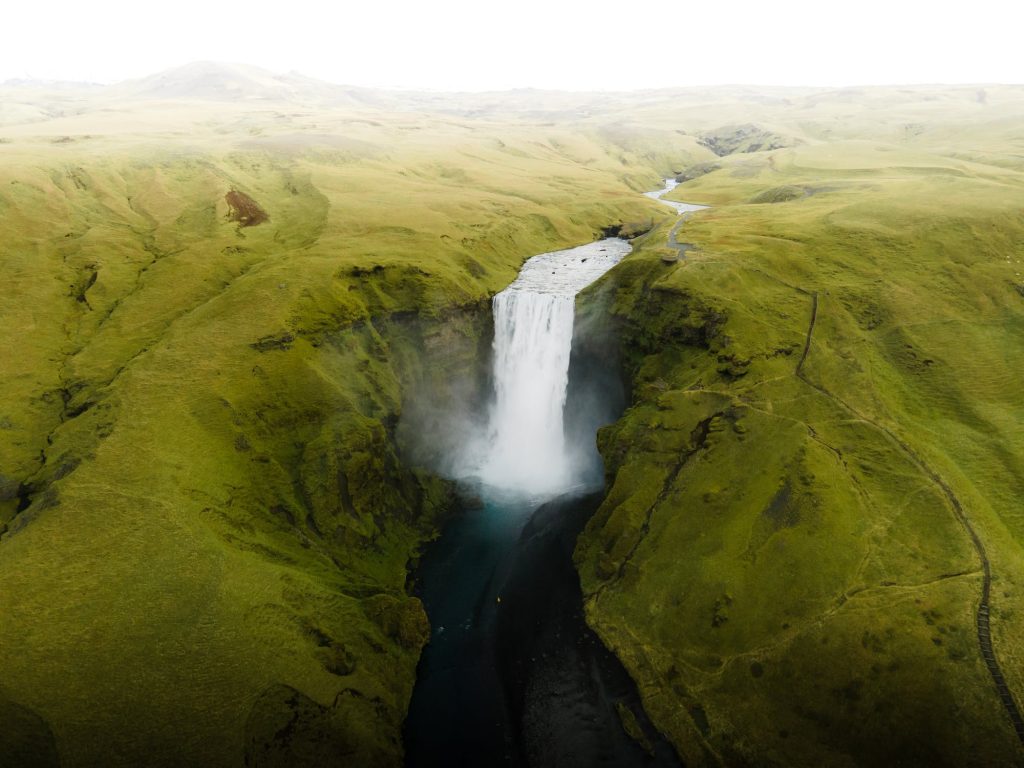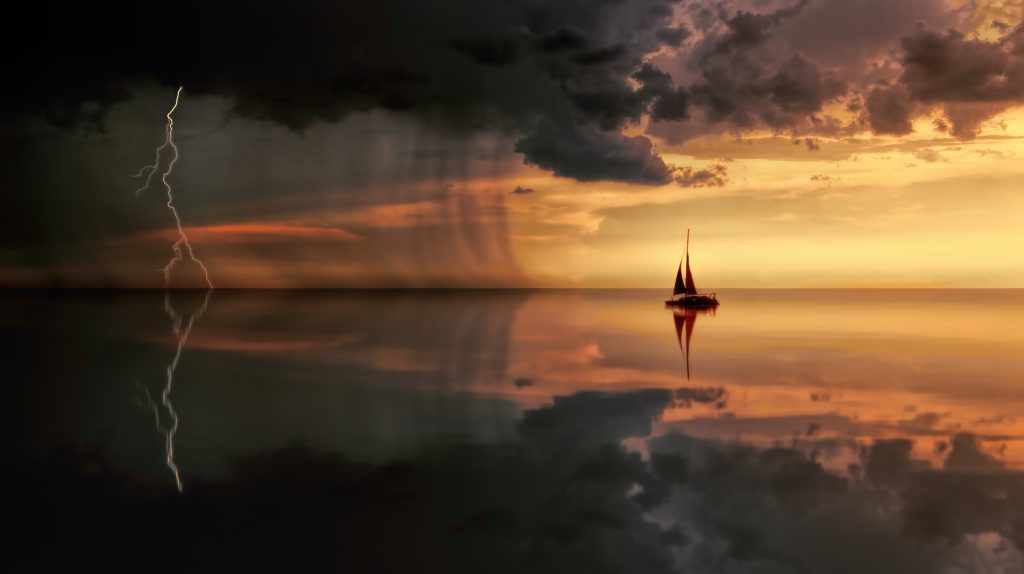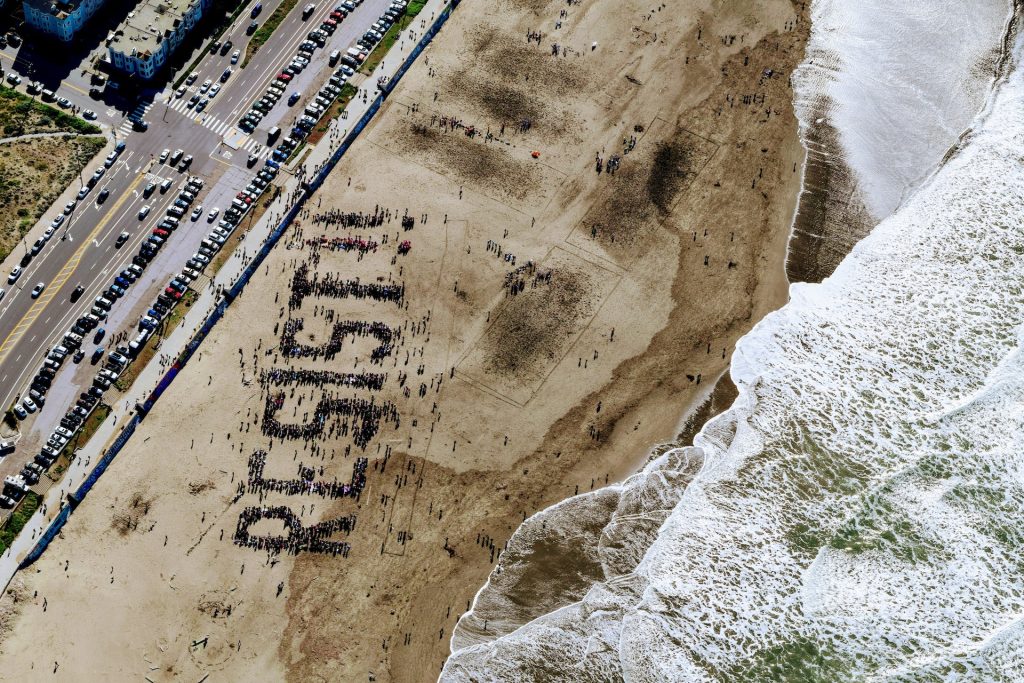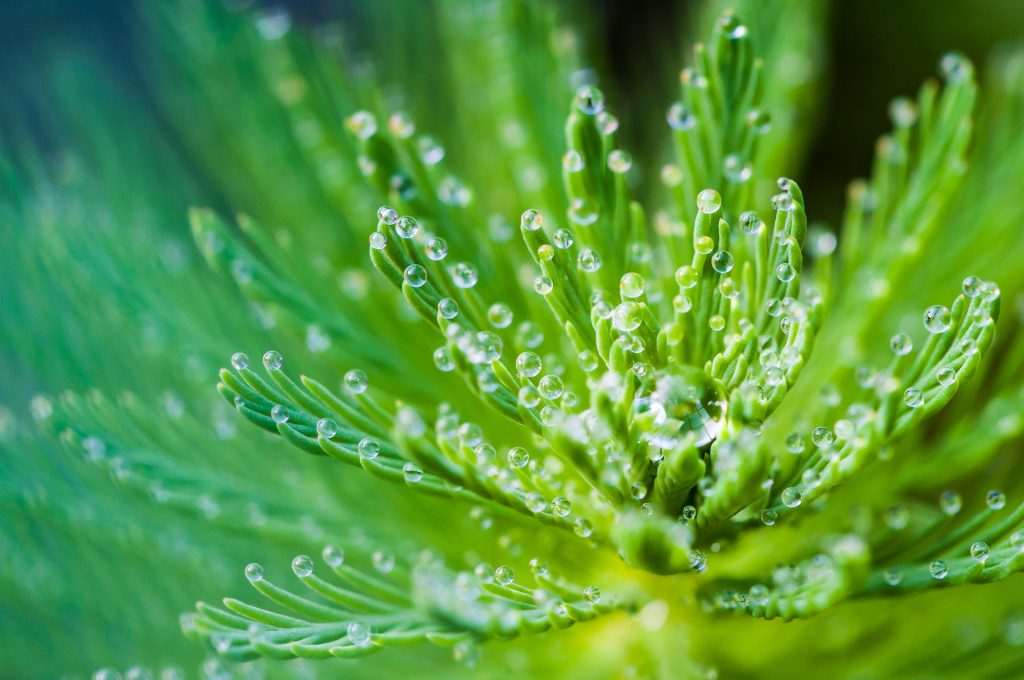
by DGR News Service | Aug 21, 2024 | ACTION
Hello! Brandi from Deep Green Resistance here.
We here at DGR would love to invite you to our upcoming online conference opportunities. They’re all about our annual conference which is fast approaching. The dates of the conference are Friday, August 23rd (afternoon) until Monday, August 26th (morning).
We’ll be doing three livestreams. They are all taking place on Saturday, August 24th and all times listed are in the Pacific Daylight Time zone. Our first live stream starts at 9 am on the 24th and will be presented by Lierre Keith. Those of you who have seen Lierre in action know what a powerful speaker she is. Her talk is entitled From Living Planet to Necrosphere: In the Time of Patriarchy’s Endgame and you definitely don’t want to miss it!
Our second livestream will be taking place at 2:30 pm and it will be a Q & A hosted by award-winning author Derrick Jensen. Here is the event page link for both of these first two livestreams and this is also where you can submit questions for Derrick to take on during his event. https://www.facebook.com/events/1201872644161114
The third livestream, our Grand Finale, is also a much-needed Fundraiser and begins promptly at 6 pm. We could really use your help, now more than ever, and we’ll be deeply appreciative of every single dime our fundraiser brings in. Here’s the event description for you: It’s Open Mic night at the annual DGR conference. Join us live for magic, music, poetry, and prose, and lots and lots of jokes. We’re running this as a fundraiser and appreciate anything you can give.
And here is the event page link to the Open Mic fundraiser for you as well: https://www.facebook.com/events/3910359789251916/
An additional item for your attention is that we will be offering all of our Conference Workshops over Zoom, a video meeting platform. Some of you have already asked to be on the Zoom list so next I’ll be gathering the names and getting everything ready for this, including publishing the schedule. There will be a limited number of spots for Zoom participants; if you haven’t already asked to be on the list but want to be, now is the time to request this. You’ll need links to be able to Join and we’ll need to have you ‘all set’ in plenty of time. To request your spot on the Zoom list, please send me an email at brandiwork24@gmail.com letting me know. I will respond to let you know either that your spot is confirmed or that we are full.
As Always, Stay Fierce and Stay Wild.
Thank You Very Much!
—
Sincerely,
Brandi Hayworth
Deep Green Resistance
Executive Director

by DGR News Service | Jun 5, 2023 | ACTION, Mining & Drilling
Editor’s Note: Any alternative to fossil fuel is embraced as “green.” These include the so-called alternatives that require the destruction of the natural world on par with the destruction by fossil fuel. DGR has always stood against these false solutions. Instead, we stand with the real solutions, i.e. a complete halting of the industrial civilization and a return to a regenerative system.
The following article is written by Arno, and was originally published on the DGR France website. It is translated by Benja. It discusses the damage done by lithium mining, a core element of batteries for electronics, including electric cars.
By Arno/DGR France (Translated by Benja)
Focused on the fight against climate change, most environmental movements forget about other ongoing environmental disasters that are just as important, if not more so. One of the most serious is undoubtedly the destruction of biodiversity. Worse, in their frantic race to stop climate change – or rather in their frantic race to find alternative energies to carbon-based energies, and thus maintain the standard of living of Westerners and ensure the good health of the industrial machine in a context of climate change – they are doing everything to initiate an energy transition by promoting the development of so-called “green” energies, which are however very damaging to the planet.

Two weeks ago, DGR France was on the site where a lithium mine is planned to create the batteries that are essential for the operation of machines powered by “green” energy. This would be a local extraction, which would also allow France to be less dependent on distant imports. In short, from the point of view of environmentalists, it is a double victory.
However, there is nothing to celebrate. The site in question is a magnificent old forest, of which nearly a hundred hectares will have to be logged for the installation of the mine. What’s more, this forest is located in the Puy-de-Dôme, the water tower of France. From this forest flow many rivers that feed the region, springs and wells. In summer, when the rivers are almost dry, which is increasingly common with climate change, the water table replenishes the rivers so that they never run dry, allowing the maintenance of aquatic life. Unfortunately, by digging deep to extract the rock (granite), the water table will drop below the level of the rivers. In summer, the water table will not be able to feed the rivers. Worse, it is the rivers, who’s level is already very low, that will end up emptying themselves into the water table.

But that’s not all. Lithium is found in a specific rock, mica, which makes up 0.5% of granite. The mine will therefore extract phenomenal quantities of granite to reduce it to powder in order to get its hands on the mica. To do this, the operator will build huge basins in which the granite will be mixed with thousands of liters of chemicals to isolate the mica. The mica, once recovered, will be sent with water in a pipeline, whose implementation will ravage other natural areas of the region, to end up in a second plant that will be created for the occasion. The mica will then be immersed in very powerful baths of acids and bases, at very high temperatures, to finally obtain the precious lithium. It goes without saying that these on-site operations will consume phenomenal quantities of water, which will be pumped directly back into the aquifer, or at least what is left of it
Once you’ve taken the mica, you’re left with the rest of the granite, 95.5% of the chemical-soaked rock, which will then be put back underground. For centuries to come, rainwater will seep through this mine waste and be laced with arsenic, heavy metals and other chemicals used in the settling process, which will end up in the region’s waterways. That’s what a mine is. That’s why the US Environmental Protection Agency (EPA) ranks water contamination from mining activity as one of the top 3 threats to the world’s ecological security. And it’s not like we’re running out of water in France because of droughts…

One pinches oneself to believe it, but that is nevertheless ecology according to certain movements which militate in favour of some “energy transition”. By claiming to solve a problem, they aggravate and create others. In France, since the beginning of the 20th century, 67% of wetlands have disappeared, as well as 75% of pollinators. Two hundred species disappear every day in the world, and 92% of large fish have already disappeared, but this is apparently secondary. According to them, the important thing is to secure the energy future of industrial civilization.
If you want to get out of these contradictions, and finally think seriously about how to save what is left of the living on this planet, join Deep Green Resistance.
Featured image by Zac Edmonds on Unsplash All other images in the text are taken by Alec from DGR France.

by DGR News Service | Mar 20, 2023 | ANALYSIS, Culture of Resistance, The Problem: Civilization
Editor’s Note: Today we’re sharing the following brief essays written by members of Deep Green Resistance:
My Favorite Natural Place
When I was about 8 I lived in the mountains and our home was surrounded by tall needly trees.
Not too far from one corner of the home, just slightly down the hill, was a small cluster of boulders. The rocks were situated in such a way that I could just manage to nestle myself 8-year-old self between them.
It was a tiny haven. A mini open-air dwelling and escape from regular life.
The chipmunks would occasionally join me and there we’d sit listening to the trees creaking in the wind.
I haven’t lived in the woods or any place even remotely as wild since. I’ve called cities home for the majority of my life, both before and after that time. And for an embarrassingly long time, I didn’t realize anything was missing from my life.
But somehow I finally realized the errors in my ways. There wasn’t any specific moment in time or place I visited that reminded of what I was missing. But I began to seek out natural refuges wherever I was. And when I took the time to look around me, I saw that beautiful places were everywhere. Not just in the mountains but in the city parks. And at the beach. On the trails near my home. Even my backyard.
If I had to pick just one favorite place in nature anywhere, I think the mountains will always top the list. But actually I like to think that wherever in nature I happen to be is my favorite place.
Why Should We Care About the Planet?
Two thirds of the oxygen in the air we breathe comes from plankton in the ocean. We evolved with nature, shaped by our relationships with the plants and animals around us.
Every cell in our bodies comes from nature. We are made of water, plant and animal, virus and microbe. The bacteria in our gut outnumber our own cells. We are human only in relationship with the more than human world. And it is an honour to be related. To share a connection with the magnificence and intelligence embodied in the diversity of species who are our kin. It is an honour to be an animal on this planet.
I care because I am in love with the natural world. And knowing what I know, I think it is a necessity to protect it. But more than that, it is an act of gratitude. The Earth gives us our very lives. It gives us the most beautiful things we will ever experience. I could work my whole life in activism and never repay the cost of a single breath of ocean air.
How Do We Prepare For What’s Ahead?
We are living in unpredictable times. Whether it’s the threat of nuclear annihilation, economic depression, or ecological collapse, no one can predict exactly what will happen or when. What we do know is that cities and suburbs will not be places humans can live in the long run.
Women need to learn self-defence now. As things become increasingly chaotic, men will look for an outlet for their violence. Those outlets are always women and nature. We can attempt to learn the skills that are necessary for survival in traditional human cultures.
But there are no personal solutions to social problems, which means we need to build communities, we need to organize, and we need to defend the natural world as if our lives depend on it, because they do.
A Culture of Resistance
What does it mean to have a culture of resistance? What does this culture value? What is it resisting, and why? How is it different from the dominant culture?
The culture that we are living in now — a capitalist, industrial society — has certain values that we have been told are important for our well-being. Some of these values are: unlimited growth is good, we can have whatever we want, humans are superior to all other life forms on earth, we can tame the natural world for our own purposes, and the individual is more important than the community.
The problem with these values is that they are unjust and unsustainable. We aren’t living within the natural limits of our planet. We think we can continue to use up everything on the earth, and there will be no consequences. And if there is a problem, technology will solve it.
In the meantime, the population continues to rise, more and more of the earth is being destroyed, and more species are dying every day. People are becoming more alienated from each other. They don’t understand, or don’t want to acknowledge, that industrial civilization is the cause of all this suffering.
A culture of resistance rejects industrial, capitalist values. It fights for the natural world and knows that we are just one of many species that share this earth.
A culture of resistance joins together as a community, and rejects the idea of individualism. No one person is more important than another. We work together to meet our needs. We respect all beings and realize that we are dependent on nature to live. Nobody should be using up all the natural resources, thereby making it very difficult for others — human and nonhuman — to survive. It reminds me of the Buddhist teaching, “Do not take anything that is not freely given.”
A culture of resistance recognizes that the earth is finite. The planet can support a few million people, but not billions. It can provide us with all we need to stay alive and healthy: clean water and air, natural food, and adequate shelter. Other beings on the planet are respected and seen as part of the natural community, not things to be exploited. Hunter-gatherers used to live in harmony with nature for thousands of years, and it was sustainable.
The modern culture we live in today is toxic in so many ways. If we do not resist, it will continue to grow until it collapses under its own weight, causing unimaginable destruction and suffering. We must get rid of industrial civilization. Join the culture of resistance!
Why I Joined Deep Green Resistance
By Iona
When I came across Deep Green Resistance I had no background in environmentalism and no knowledge about the ecological crises our planet was facing, and in many ways I felt like this put me at a disadvantage. But I think it gave me one really important advantage: it meant that I hadn’t yet been taken in by many of the false solutions offered by the mainstream environmental movement.
I hadn’t been primed to believe that my power as an activist was limited to petitions, street protests, reducing my carbon footprint and so on. And it meant that I didn’t already have a strong belief that technologies like wind and solar were solutions for the planet. It quickly became clear to me, through understanding this new analysis, that such technologies can only be seen as solutions in a world in which humans have lost their true connection to the natural world.
I learned that some studies have shown that renewables are expected to be the number one cause of habitat destruction in coming years. So that begs the question, is that what the planet needs? Is that something I can stand by and support?
My hope is that more people start to question some of these mainstream narratives, whether or not they already understand what’s happening to our planet — our home.
I want more people to look at the facts, and be unafraid in making up their own minds how they feel about what they see.
I want more people to feel confident in questioning whether a new form of industry that calls itself “green” is what the planet really needs, whether it’s really what we want to be doing to our home. And whether we think this industrial way of life we’ve all become so used to is really sustainable.

by DGR News Service | Oct 19, 2020 | Movement Building & Support
One of the biggest barriers to effective resistance today is that most people who want to resist don’t have the knowledge or skills. That’s why Deep Green Resistance offers trainings and workshops to aspiring organizers and revolutionaries.
Our trainings are tailored to your needs and adapted to your specific situation. These trainings aim to move us from ineffective protest to material resistance. Typical subjects we cover include:
How to Organize a Training
Organizing a DGR training is one of the best tools for connecting with our people in person. These trainings provide an extended opportunity (typically lasting 2-3 days, but with the potential for longer and shorter trainings, CoViD-safe distancing protocols, and online trainings) to build relationships and normalize militant resistance.
This document is broken down into four steps, which are organized roughly in chronological order.
Step 1: Liaise with Local Contact
Any training is dependent on some level of local assistance to help coordinate. This assistance should ideally come from someone engaged with organizing in their community, or who is an organic leader. Step one is to engage in communication with a primary local contact to determine baseline information for the training.
Action Items:
- Select a date and time
- Select a location
- Determine target audience and expected size
- Determine basic budget requirements (Will housing be required? Will a space need to be rented? etc.)
- Create draft program
Step 2: Registration
Once the date is chosen, we should open up registration as soon as possible. Registration could be open to the public, or closed for members of a certain group. Both options have pluses and minuses. Consider the need for screening and security. The cost of a weekend training is typically $20-$100 sliding scale. We generally offer free tickets via a simple email application request.
Action Items:
- Setup a method for registration
- Screen attendees
- Create a waiting list if necessary
Step 3: Promotion and Fundraising
Now that registration is set up, promotion and fundraising can begin.
Action Items:
- Setup an online fundraiser
- Track registration and donation income
- Track expenses
- Promote the training
Step 4: Logistics
The final element in the training is the boots-on-the-ground side of things.
Action Items:
- Make list of, purchase, and arrange transport for necessary supplies
- Organize meals (in coordination with local liaison)
- Organize housing for trainers (in coordination with local liaison)
- Organize transportation (such as speaker travel, carpooling, etc.)
- Childcare
If you are interested in organizing a DGR training in your community, or getting involved in trainings moving forward, please email training@deepgreenresistance.org or contact us via encrypted chat using the app Wire (@deepgreenresistance).
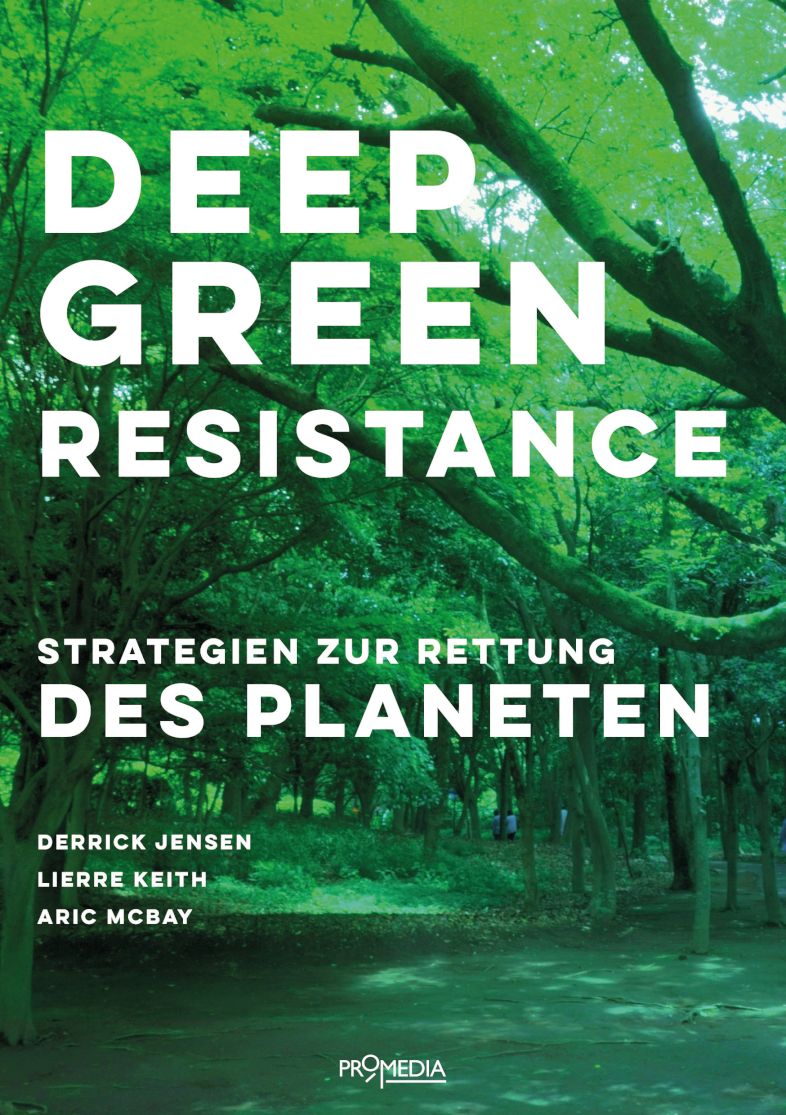
by DGR News Service | Mar 23, 2020 | Strategy & Analysis, The Solution: Resistance
We are happy to announce that the DGR book is available in German! Our thanks goes to the volunteer translaters, editors and the Austrian publisher who did very good work.
The book can be ordered as print and e-book from the publishers website:
Deep Green Resistance
Wir freuen uns mitteilen zu können, dass das DGR-Buch in deutscher Sprache erhältlich ist! Unser Dank gilt den ehrenamtlichen Übersetzern, Redakteuren und dem österreichischen Verlag, die sehr gute Arbeit geleistet haben.
Das Buch kann als Print- und E-Book auf der Website des Verlags bestellt werden.
„In diesem Buch geht es darum, zurückzuschlagen. Die vorherrschende Kultur, genannt Zivilisation, tötet den Planeten. Und es ist längst an der Zeit für diejenigen von uns, denen das Leben auf der Erde etwas bedeutet, die notwendigen Maßnahmen zu ergreifen, um diese Kultur daran zu hindern, alle lebenden Wesen zu zerstören.“
Tiefenökologischer Widerstand („Deep Green Resistance“) beginnt dort, wo die Umweltbewegung aufhört: Denn für die Anhänger dieser Idee ist die industrielle Zivilisation unvereinbar mit dem Leben. Sie glauben nicht daran, dass irgendeine Form von zukünftiger Technologie dem Klimawandel, dem Artensterben, der Luftverschmutzung, der Bodenversiegelung oder irgendeiner anderen ökologischen Katastrophe, die die Menschheit ausgelöst hat, Einhalt gebieten kann.
Auch mit „bewusstem“ Konsumieren oder „nachhaltigem“ Wirtschaften lässt sich der Planet Erde nicht retten, sondern nur mit einer ernsthaften Widerstandsbewegung, die die zerstörerische industrielle Wirtschaft zum Erliegen bringt.
Die AutorInnen Derrick Jensen, Lierre Keith und Aric McBay vertreten diesen radikalökologischen Ansatz, der in den USA und an anderen Orten immer mehr AnhängerInnen findet. In ihrem erstmals auf Deutsch übersetzten Manifest erzählen sie davon, wie täglich 200 Spezies von der Erde verschwinden, jährlich eine Fläche im Ausmaß des Aral-Sees verwüstet wird und wie pro Jahr 23 Millionen Menschen an den Folgen von Wasser-, Luft- oder Erdverschmutzung sterben. Sie erzählen von einer Welt, die kurz vor dem Ableben steht – wenn wir uns nicht sofort organisieren und handeln.
Das Buch „Deep Green Resistance“ erläutert bis ins Detail unterschiedliche Möglichkeiten des tiefenökologischen Widerstands, von gewaltlosen Aktionen bis zur Guerilla-Kriegsführung. Und es nennt die Bedingungen, die für den Erfolg dieser Optionen erforderlich sind. Es ist ein Handbuch und Aktionsplan für all jene, die entschlossen sind, für diesen Planeten zu kämpfen und den Kampf zu gewinnen.
Die AutorInnen
Derrick Jensen, geboren 1960, ist ein US-amerikanischer Autor und radikaler Umweltaktivist. Er hat über fünfzehn Bücher verfasst, zu den bekanntesten zählen: „Endgame“, „A Language Older Than Words“ und „What We Leave Behind“ (gemeinsam mit Aric McBay).
Lierre Keith, geboren 1964, lebt als Schriftstellerin, Kleinbäuerin und radikal-feministische Aktivistin in den USA.
Aric McBay ist Autor mehrerer Sachbücher, Aktivist und Kleinbauer und lebt in Ontario, Kanada.
For years, Derrick Jensen has asked his audiences, “Do you think this culture will undergo a voluntary transformation to a sane and sustainable way of life?” No one ever says yes.
Deep Green Resistance starts where the environmental movement leaves off: industrial civilization is incompatible with life. Technology can’t fix it, and shopping—no matter how green—won’t stop it. To save this planet, we need a serious resistance movement that can bring down the industrial economy. Deep Green Resistance evaluates strategic options for resistance, from nonviolence to guerrilla warfare, and the conditions required for those options to be successful. It provides an exploration of organizational structures, recruitment, security, and target selection for both aboveground and underground action. Deep Green Resistance also discusses a culture of resistance and the crucial support role that it can play.
Deep Green Resistance is a plan of action for anyone determined to fight for this planet—and win.








